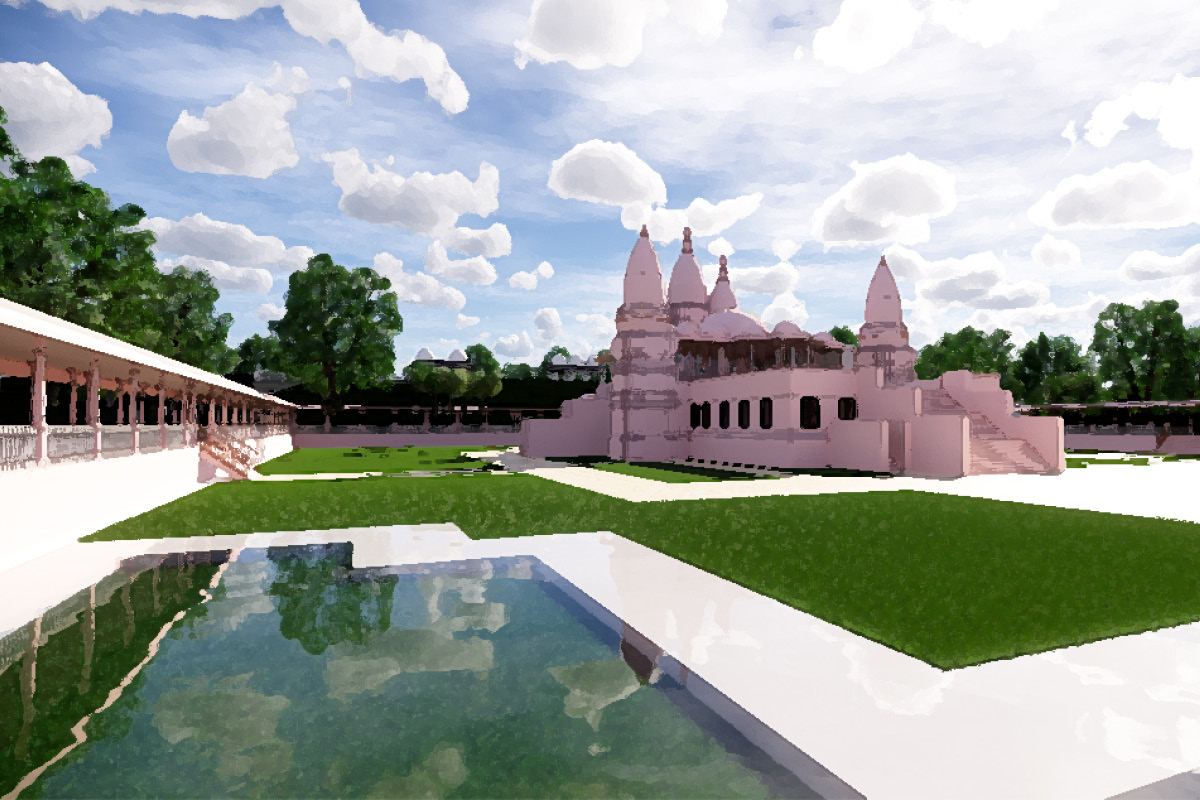Local architect’s designs on Hindu temple
- Details
- Written by: Philippa Borland Penrith City Council (02) 4732 7777 (02) 4732 7958 council@penrithcity.nsw.gov.au https://www.penrithcity.nsw.gov.au 601 High St Penrith NSW 2750 Australia
Emu Plains business, DDC Architecture and Interior Design are the Australian architects for a $41 million Hindu Temple which will be built in Adlington Road, Kemps Creek.

Approved last month by the Sydney Western City Planning Panel, the development will include a 25-metre tall Mandir, or Temple, two two-storey community buildings, a carpark and extensive gardens.
DDC Director Geoff Ferris-Smith was sought out by the religious group Bochasanwasi Akshar Purushottam Sanstha (BAPS) due to his previous work.
“They wanted to use a local architect to support the community they are coming into,” Mr Ferris-Smith said. “We stood out because our core work has been designing Churches and bible colleges, and we also have experience in building large scale workforce accommodation communities for the resources sector.”
This means Mr Ferris-Smith is adept incorporating cultural and spiritual elements into designs and working at scale.
“One of our past projects was a $65 million, 850 room workforce accommodation community at Boggabri,” he said. “The town had a population of 750 people, so we were effectively doubling the population and had to upgrade a lot of infrastructure to support that.”
After initial discussions, BAPS Sydney, based in Rosehill, sent Mr Ferris-Smith to India.
“I travelled to India to get a better understanding of the Hindu faith, which was a huge privilege,” he said. “I spent two weeks living in a Monastery with the Monks and travelled to five different Temples throughout the state of Gujarat in the west of India.”
Following his trip, it took three years from first pencil to final approval of the design.
“Tradition dictates that the Mandir itself can only be designed by a Monk, and the first plans for the community buildings were prepared by a lay architect in India,” he said. “My real job was to translate their vision – to capture what they wanted to achieve and make it possible in an Australian context.”
Mr Ferris-Smith worked closely with Penrith Council to ensure the design worked with the long, sloping site, answered environmental concerns and was compliant with Australian safety and accessibility standards.
While the Mandir may take up to nine years to construct, the first stage of the development will be complete in 2023.
This will involve moving 400,000 cubic metres of earth to accommodate a carpark, gardens and the two community buildings, which will include a 2,000 seat auditorium, kitchens and a 1,000 seat dining room along with teaching spaces.
The Temple’s gardens will be open to the public.
“The idea is that you come in through the gardens to calm your mind and help stop the ‘monkey chatter’ of the mind and the everyday world before you enter the Temple,” Mr Ferris-Smith said.
The Mandir itself is also surrounded by an ambulatory, or walkway, that has the same function. Devotees make circuits of the ambulatory to prepare themselves to go inside and move around the idols.
Mr Ferris Smith said the completed project promises to be spectacular.
The buildings will be rendered in a sustainable man-made stone and every surface will be covered in highly ornate details. Every detail has significance, including the alignment of elements of the buildings as visitor’s progress up the site towards the Mandir.
Its construction will also create local jobs, something Mr Ferris-Smith, who has lived in the Penrith area all his working life, is passionate about.
“I used to have a business in Surry Hills because I was told that to be a successful architect you had to be in the CBD,” he said. “I dragged myself to the city for 25 years until I realised I could challenge that notion.”
DDC opened in Emu Plains in 2013 and employs six staff. The business recently diversified to include CK Kitchens and Mallee Co. both of which offer Australian designed and made products.
“I’m proud to tell people DDC is in Penrith. We’re as good as anyone in Australia at what we do, so why shouldn’t the jobs be here?” he asked. “And, when you invest in your local area you don’t just create jobs you help create and build community.”
Image: Early watercolour renderings of the Hindu Temple to be built in Kemps Creek, prepared by local architect Geoff Ferris Smith. The alignment of the buildings has since been altered.

